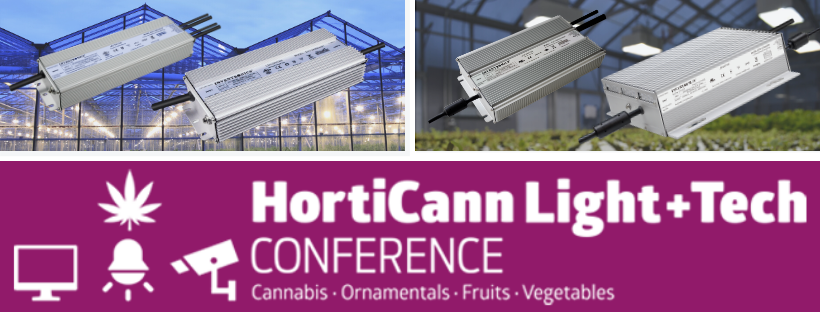Despite the physical show being cancelled, HortiCann Light + Tech, organized by Endeavor Business Media, still offered their conference topics virtually from October 20-21. They had a tremendous lineup of speakers and panelists to help discuss important topics and trends in the current horticultural lighting market. Registration to attend the virtual conference was free and Inventronics ensured that several from our team participated. If you didn’t have the opportunity to attend the presentations, here is a recap of some of the notes and trends we noticed this year.
U.S. Department of Energy (DOE) Findings:
The DOE reported that roughly 98% of existing greenhouse space is still being equipped with high-pressure sodium and metal halide lighting. If the horticulture lighting industry were to switch to LED lighting, we would see an energy savings of 34% ($350 million/annually) and if the animal lighting market switched to LED lighting, we would see an energy savings of 25% ($96 million/annually). So far, the highest LED adoption has been in commercial vertical farming (with virtually 100% LED adoption) and broiler farms (with 58% LED adoption). The lowest LED adoption has been in lighting supplemented greenhouses (with 2% LED adoption) and hog facilities (with 7% LED adoption).
Controls:
Controls still plays a key role in plant production and ensuring a sustainable ROI. Growers are continuously making adjustments to their light spectra, intensity and distribution to try and manipulate specific outcomes for their plants. These key lighting components have a tremendous effect on flavor, color and crop yields. Cary Eskow, Vice President of Avnet LightSpeed presents materials on the importance of a multispectral “Light Engine” they are developing that is optimized for large vertical greenhouses and provides five individually controllable wavelengths/channels.
Integrated Approach:
One panel focused on understanding the interactive effects and variables of the total environment, not just lighting. Cultivators have learned that all aspects of the growing system has an impact on the performance and yield of a growing operation so it’s important to look at the overall design for the controlled environment including site design, soil quality, lighting systems, HVAC systems and performing routine performance-based measurements, tracking and reporting. They also stressed the important of brining the correct people into the project and including as many as you can to avoid creating “silos” within your business.
Cannabinoid Biosynthesis:
With legalization gaining popularity in many states, this market is continuing to grow whether it’s something you do or do not support. The research driven LED manufacturer Valoya has conducted lengthy testing of THC levels, CBD and CBG concentration and terpenes with different lighting- Spectra LEDs, traditional LEDs and HPS. In these tests they have found that the difference in the UVA range can have a large impact on plant yield and quality.
The HortiCann Light + Tech Conference sessions are still accessible for a limited time on their website: https://virtual.horticannlt.com/. To learn more about Inventronics products designed for the Horticulture market, visit: https://www.inventronics-co.com/horticultureleddrivers/
